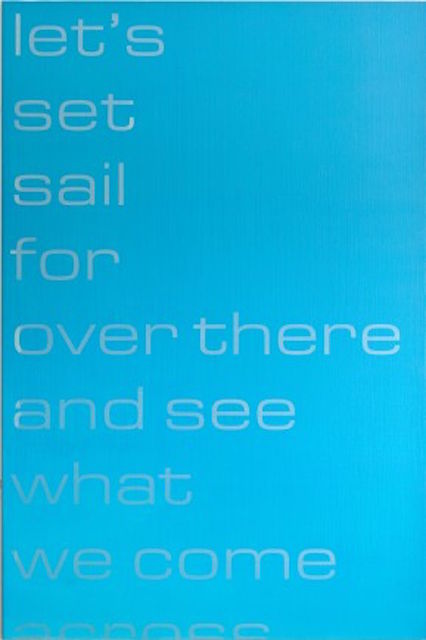
For the last exhibition of the season Stigter van Doesburg presents Tim Ayres‘ The Beautiful Thud, with an intervention of Lucas Lenglet in the backspace.
Since the early 1990s the Amsterdam based artist Tim Ayres (1965, Hastings, UK) has been fascinated by the space in language, which in his own words gives “the possibility of poetry”. For the artist, the written word is a visual abstract form that creates an image straight in the mind’s eye. In this manner the subject of the work is ‘said’ to the viewer, for the viewer to see the painting’s image. His texts derive from all corners of life, from overheard conversations, song lyrics, television or film, through to things that he has said to himself in his own head.
In The Beautiful Thud, Ayres moves away from the industrial appearance of his work of previous years, to present a new series of text-based paintings employing acrylic on canvas. Compared to the cool and glossy household paints the artist used on MDF panels, he introduces a painterly surface composed of shades and gentle brushstrokes.
Over the monochromatic canvases, Ayres paints words in his favourite typeface: Eurostile extended, a rectangular shaped font with rounded corners, designed in 1962 by Aldo Novarese that has always been popular in Science fiction graphic design.
The mirrored text in Huh? exemplifies the abstract elements of written language. It gives us the key to understand the geometric paintings of Ayres, where the same lines of his text painting are straightened up to form an abstract language. In contrast to the minimalism of these works, two comparatively large paintings expose the irony of his poetry. In Let’s set sail [..], his own text scrolls down in columns as in the closing credits of a motion picture. For And all that poetry shit […] Ayres borrows words from a singer-songwriter friend of his to make a bold statement that fills the copper canvas.
From installations to photocompositions all the aspects of the work of Lucas Lenglet (1972, Leiden, NL) are connected by clean lines and sharp edges. The recent work the other - representations of the self presents how the image of man was depicted in different cultures and through different times, combining photographic reproductions of anthropological items in rectangular compositions. The starting point of this research were two German books of anthropology that the artist joined together to make So sahen sie uns / Wie sie sich sahen [tr. As they saw us / How they saw themselves]. The same dualism ‘self / other‘ returns in the architectural installations of the artist. Modular elements such as shelters and cages protect us from what happens outside, but at the same time lock us in.